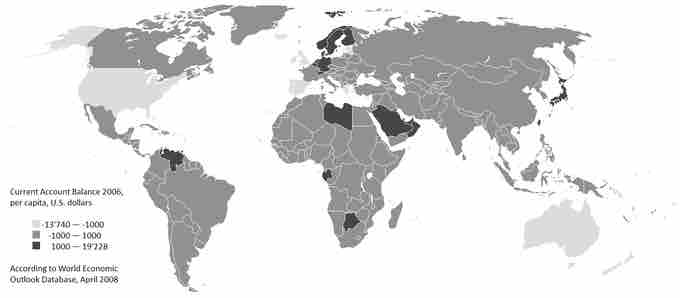Balance of Payments
Balance of payments (BOP) accounts are an accounting record of all monetary transactions between a country and the rest of the world. These transactions include payments for the country's exports and imports of goods, services, financial capital, and financial transfers. The BOP accounts summarize international transactions for a specific period, usually a year, and are prepared in a single currency, typically the domestic currency for the country concerned. Sources of funds for a nation, such as exports or the receipts of loans and investments, are recorded as positive or surplus items. Uses of funds, such as for imports or to invest in foreign countries, are recorded as negative or deficit items.
When all components of the BOP accounts are included, they must sum to zero with no overall surplus or deficit. For example, if a country is importing more than it exports, its trade balance will be in deficit, but the shortfall will have to be counter-balanced in other ways – such as by funds earned from its foreign investments, by running down central bank reserves, or by receiving loans from other countries.
While the overall BOP accounts will always balance when all types of payments are included, imbalances are possible on individual elements of the BOP, such as the current account, the capital account excluding the central bank's reserve account, or the sum of the two. Imbalances in the latter sum can result in surplus countries accumulating wealth, while deficit nations become increasingly indebted.
The term balance of payments often refers to this example: a country's balance of payments is said to be in surplus (balance of payments is positive) by a certain amount if sources of funds (such as export goods sold and bonds sold) exceed uses of funds (such as paying for imported goods and paying for foreign bonds purchased) by that amount. There is said to be a balance of payments deficit (the balance of payments is said to be negative) if the former are less than the latter.
Under a fixed exchange rate system, the central bank accommodates those flows by buying up any net inflow of funds into the country or by providing foreign currency funds to the foreign exchange market to match any international outflow of funds, thus preventing the funds flows from affecting the exchange rate between the country's currency and other currencies. Then the net change per year in the central bank's foreign exchange reserves is sometimes called the balance of payments surplus or deficit.
Alternatives to a fixed exchange rate system include a managed float where some changes of exchange rates are allowed, or at the other extreme a purely floating exchange rate (also known as a purely flexible exchange rate). The central bank does not intervene with a pure float to protect or devalue its currency, it allows the rate to be set by the market. The central bank's foreign exchange reserves do not change.

Current Account Balance, 2006
Current Account balance, 2006, U.S. dollars, per capita